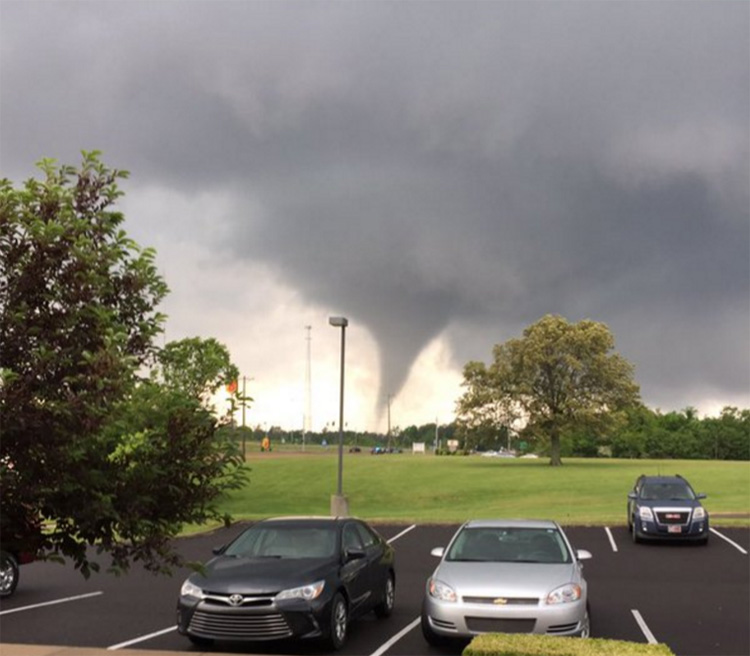
Kentucky preppers face many of the same threats as anyone else in America: civil collapse, EMP, natural disasters, etc. However, Kentuckians have unique challenges than preppers in other states. What makes sense for a prepper in Alaska may not make sense for a prepper in Georgia. This applies to Kentucky as well.
This article will focus on Kentucky from a prepper’s perspective. What specific challenges does the state face from a historical perspective? What are the threats given the state’s geography? Where should Kentuckians prioritize their preps?
NOTE: Do you live in Kentucky? You know your state, so let us know in the comments section how this article can be improved. What did we miss? What did we get right?
Kentucky Overview – Prepper’s Perspective
Welcome to the “Bluegrass” state, home of 450 thoroughbred horse farms and the world-famous Kentucky Derby at Churchill Downs. Kentucky produces more thoroughbreds than any other US state, helping drive both tourism and gambling. Over 165,000 people attend the Derby each year, contributing $160 million to the Louisville economy. More than 100,000 people are employed in horse-related business statewide and have a $4 billion economic impact.
Kentucky is also the home to the Buffalo Trace Distillery, the oldest continuously operating distillery in the US. Bourbon is a primary export from this state and there is an interesting dynamic between the state’s religious fervor and its alcohol production. However, thanks to prohibition, the state has a very anti-government culture which makes it a prime location for someone who wants to live an independent lifestyle.
Food
For centuries, Kentucky has been a haven for mankind due to its ability to produce food. Therefore, no one should starve in Kentucky if SHTF. The state is filled with fish, game, and farmable land that can easily be cultivated in times of need. There are reports of Daniel Boone killing upwards of 40 bears in one day, each of which would have rendered 70-80lbs of meat. Granted, the game population isn’t nearly what it was all those years ago, but the point stands that Kentucky is a resource rich environment.
Water
Kentucky is not under threat of running out of water. Both surface water and groundwater are present in the state. Surface water occurs mainly in the form of streams, rivers, ponds, lakes, and wetlands. Groundwater is present in porous spaces within rocks and alluvium. The average precipitation is 48 inches per year, and the average annual snowfall is 11 inches. However, they do struggle with official and unofficial water contamination from the mining activity that is still active in the state.
Kentucky Natural Disasters
Located in Hoosier Alley, a part of the US that gets substantial amounts of tornadoes. Kentucky has an average of 21 tornadoes each year. The state is known for intense storms, such as air-mass thunderstorms, lightning, heavy precipitation, and hail. These storms are known to frequently be deadly as they are often canalized into flat areas that are also conducive to farming and building cities.
Kentucky’s most devastating and frequent natural disaster is flooding. Though the floods were deadly in the past, the state has managed to build a safety infrastructure that allow people enough time to get out of flooded zones. However, the property damage caused by flood waters is still extreme.
1) June 1917 Tornado Outbreak – This tornado killed or injured well over 300 people, decimating homes throughout its wake. Tornadoes are nothing new to Kentucky though. A complete list of all the tornadoes that have hit this state in the last 100 years would be impractical, but if you would like to get an idea of just how many regularly hit here, check out this link.

2) The Great Flood of 1951 – When ten inches of rain fell in the span of only 12 hours, a completely flooded Kentucky was the inevitable result. The flooding was swift and excessive. In many areas, the second floor of buildings were the only areas not submerged. Even in 1951, the damage came in as over a billion dollars.
3) The 1976 Scotia Mine Disaster – One of the most epic and sudden mining disasters in, in 1976 a massive explosion rocked the hearts and minds of the residents of Kentucky. Due to a lack of ventilation led to a buildup of dangerous gases the explosion was inevitable. Finally, a stray spark found the gas cloud and took the lives of 26 miners.
4) The 1981 Adkins Coal Co Mine Explosion – A problem with the electrical system in the mine led to an explosion that killed 8 miners. However, this was only the beginning of a long string of coal mining accidents. Over the course of the next 30 years, 445 miners would be killed in this state.
5) The Floods of 2020 – Major rainfall once more led to floodwaters rising to a level of destruction. Though only one man died, the property damage was substantial enough to be seriously disruptive to the lives of residents of the state. Flooding should be one of the foremost concerns of anyone looking to move or purchase a home in this state
Prepping Strategies
Bugging In
Collect Rain Water
Many don’t know this, but Kentucky gets a large amount of rain through the year. Since the state has a problem with water quality and summer’s continue to get drier, it only makes sense to harvest and store the rain when it’s available. A couple of food grade barrels will more than suffice your needs for water throughout the longest of hard times. Whatever you collect that is over what you will need to drink can easily be used on crops during times of need.
Embrace Mountain Life
Not long ago, and some even to this day, live in Kentucky completely cut off from the outside world. If you find yourself in Kentucky, consider exploring those ways of life. Many people still live a near subsistence existence in the backwoods by farming, hunting, and fishing. If you can emulate their lifestyle, then bugging in would simply be just another day for you. To get started, read about the history of the first settlers into Kentucky and how they managed to make life work before electricity, the internet, and modern communications.
Have a Shelter
Even if you are in the mountains, tornados can still strike during certain times of the year. Given that you could use a root cellar and food storage locker, it only makes sense to construct an underground shelter that can serve as all three. Having a below ground tornado shelter can allow you to mitigate multiple threats to include the state’s deadly tornados while being able to keep your stores discreetly tucked away. See also free fallout shelter designs for cost-effective ideas.
Bugging Out
One of the most important pieces of equipment for any prepper planning to bug out is to have decent maps of their state. Having an identified bug out location is crucial. All preppers in any state should begin their bug out plans with a paper map of their state. Nothing is better for all-purpose use than the DeLorme Atlas and Gazetteer.
- Delorme Publishing (Author)
Don’t Shelter In Mines
One of the chief concerns during a bug out is to locate shelter while you are on the move. Throughout the state, there are abandoned coal mines of varying size. It would be an easy thing to find a derelict mine and claim it as home. However, you must never do this.
Mines, by nature, are unstable and require constant observation and maintenance in order to keep them safe. Abandoned mines, especially older ones that predate modern safety regulation, can collapse without warning. It would do no good to bug out of a SHTF situation just to be forever lost in a collapsed coal mine.
Purify the Water
Mining has long been apart of Kentucky’s history. The consequences of man digging down through the aquifers and using chemicals in the process of coal extraction has lead to contaminated water throughout the state. Therefore, it is important that you purify any water that you ingest. To neglect to do so would be to subject yourself and your family to early deaths from a variety of maladies brought on by chemicals that permeate the hills of the state.
See our article on water filters to use at home in a crisis and how to purify water with bleach.
Squirrel Hunt
While they may not look like much, squirrels are plentiful in Kentucky and provide a source of easily accessible protein. Appalachian culture has a tradition of squirrel as breakfast and for good reason, their population is robust, they are easily obtained, and they can be used in a variety of ways. If you are bugging out in Kentucky, carry a squirrel gun and harvest squirrels as you come across them. Though they are small, a few squirrels will feed a family when food is scarce.
Further Reading for Kentucky Preppers
This article just scratches the surface of what Kentucky preppers need to know. The following links could held educate you more on prepping in the state.
Kentucky Prepper Network – Facebook group centered on prepping issues and news in Kentucky.
Northern Kentucky Preppers – Facebook group where people post about prepping in Kentucky.
Kentucky Emergency Management – State disaster response, news, and resources for residents.
Disaster Relief and Emergency Assistance – HUD resource page for managing Kentucky disasters.
Sojourner Survival Outpost – Bushcraft and survival course taught by a Green Beret from Ft. Campbell.
Nature Reliance – School that teaches how to live off the land and survive in Kentucky.


1 comment
You forgot the great flood of 1937. The mighty Ohio River did massive damage.
Excellent article. Thanks for the useful information.